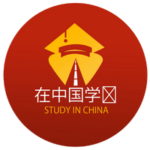The COVID-19 pandemic changed the world in many ways, and medical education in China is no exception. When international students think about studying MBBS in China, they often imagine classrooms, hospital rotations, and face-to-face interactions with teachers. However, the pandemic created challenges that forced Chinese universities to rethink their teaching methods.
Today, the MBBS experience in China looks very different from what it was before 2020. Many of these changes are here to stay, and they are helping medical students become more adaptable, skilled, and future-ready.
The Impact of COVID-19 on Medical Education
When the pandemic began, universities in China faced two big problems:
- Keeping students safe from the spread of the virus
- Continuing medical education without major delays
For MBBS students, especially those from abroad, this was even more difficult. Travel restrictions meant many could not return to campuses. Instead of stopping education, Chinese universities adopted new strategies to ensure that students continued learning.
This experience has transformed the way MBBS in China is taught and has introduced long-term improvements.
Shift to Online and Hybrid Learning
One of the biggest changes after COVID-19 was the move to online classes. Universities quickly built digital platforms where lectures, discussions, and assignments could continue without interruption.
- Recorded lectures allowed students to revisit difficult topics anytime.
- Live classes on Zoom or Tencent Meeting created interactive learning spaces.
- Hybrid learning models were introduced later, combining in-person training with online resources.
For international students, this meant they could still follow their MBBS curriculum in China even if they were stuck in their home countries. Today, hybrid learning remains common, offering flexibility that did not exist before.
Virtual Labs and Simulations
A major challenge was how to replace practical training when students could not attend hospitals or labs. To solve this, Chinese universities invested in:
- Virtual labs where students practiced anatomy and physiology using 3D models
- Simulation-based training with digital patients showing symptoms of different diseases
- AI-powered tools that guided students through diagnosis and treatment options
These tools have become permanent in MBBS programs because they allow safe practice before real-life hospital exposure.
Emphasis on Public Health and Epidemiology
Before the pandemic, many students focused only on clinical medicine. After COVID-19, universities realized the importance of public health education.
Now, MBBS students in China receive more training in:
- Epidemiology – the study of how illnesses are transmitted and the methods used to prevent or manage outbreaks.
- Preventive medicine – strategies aimed at safeguarding communities against infectious diseases.
- Health policy and global health – understanding how governments and international organizations respond to crises
This has created a generation of doctors who are better prepared for future pandemics.
Stronger Use of Technology in Teaching
The pandemic sped up the adoption of technology within medical education. Today, MBBS students in China regularly use:
- E-learning apps for medical quizzes and case studies
- AI tutors that personalize lessons
- Telemedicine platforms to understand how remote care works
- Digital libraries with research papers, journals, and textbooks available online
This digital shift makes medical learning faster, more engaging, and more aligned with the global future of healthcare.
Improved Communication with International Students
When the pandemic struck, a large number of international students were unable to return to China and remained in their home countries. Universities realized the importance of constant communication to keep students engaged.
- Dedicated student support portals were launched
- Teachers held regular online meetings with students
- Universities started offering bilingual support in English and Chinese
Even now, this strong communication continues, making it easier for foreign students to adjust when they study MBBS in China.
Focus on Mental Health Support
The pandemic was stressful for students, especially those far from their families. Chinese universities responded by introducing:
- Online counseling sessions
- Peer support groups
- Mental health awareness workshops
This focus on mental well-being remains a permanent part of MBBS education. Students are now trained to take care of their own mental health while also learning how to support future patients in times of crisis.
Greater Flexibility in Exams and Assessments
Another lesson learned was that traditional exams do not always work in uncertain times. Many universities adopted:
- Open-book online exams
- Continuous assessment models with quizzes, projects, and case studies
- Practical skill tests via video submissions
This flexible approach has made assessments more student-friendly and reflective of real-world medical practice.
Collaboration and Research Opportunities
COVID-19 created a surge in medical research across China. MBBS students had opportunities to:
- Participate in studies related to vaccines and treatments
- Assist in data collection and analysis
- Work alongside professors in international collaborations
This gave students a chance to engage in research-based learning, which continues to benefit their careers.
Advantages for Future MBBS Students
The changes made during and after COVID-19 offer long-term benefits:
- More flexibility – Students can learn both online and offline.
- Stronger clinical preparation – Simulation training makes them more confident.
- Global perspective – Public health education prepares them for worldwide challenges.
- Career readiness – Exposure to digital tools, telemedicine, and AI gives them an edge in modern healthcare.
Challenges That Remain
While post-COVID education in China is stronger, students still face challenges such as:
- Language barriers when using advanced technology in Mandarin
- Time zone differences for international students attending online classes
- Limited social interaction in hybrid models compared to fully in-person learning
However, universities are continuously improving systems to overcome these issues.

